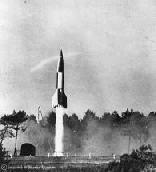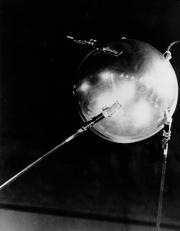Modern Rocketry and Space Travel
 For a rather in depth discussion of ancient rocketry (and yes, people have been building
rockets for 2000 years!), go here and here.
The highlights include: the first propulsive device was made by the Greeks,
called an aeolipile, in 100 BC; the Chinese experimented with gun-powder filled tubes and
attached them to arrows in 100 AD (the first 'bottle rockets!') and in 1232 the Chinese
defeated the Mongrels with their 'arrows of flying fire'. Soon after, the Mongrels used
similar fire arrows to capture Baghdad in 1258, and soon after that, the Arabs used rocket
armories against the French in 1268---A good idea travels fast! In the 16th C. German Johann
Schmidlap created the first multi-stage rocket. This idea is basic to all rockets today.
For a rather in depth discussion of ancient rocketry (and yes, people have been building
rockets for 2000 years!), go here and here.
The highlights include: the first propulsive device was made by the Greeks,
called an aeolipile, in 100 BC; the Chinese experimented with gun-powder filled tubes and
attached them to arrows in 100 AD (the first 'bottle rockets!') and in 1232 the Chinese
defeated the Mongrels with their 'arrows of flying fire'. Soon after, the Mongrels used
similar fire arrows to capture Baghdad in 1258, and soon after that, the Arabs used rocket
armories against the French in 1268---A good idea travels fast! In the 16th C. German Johann
Schmidlap created the first multi-stage rocket. This idea is basic to all rockets today.
Modern Rocketry
 The American scientist, Dr. Robert Hutchings
Goddard and a team of no more than seven, had began there efforts to build a rocket as
early as 1916. Aided by a grant from the Smithsonian Institution and as early as 1939
he had successfully tested several types of rockets.
The world's first liquid-fuel missile, the infamous V-2 rocket, was built by the
brilliant German scientist Wernher von Braun. It achieved its great thrust by
burning a mixture of liquid oxygen and alcohol at a rate of about one ton every
seven seconds. This rocket rain death on Great Britain's big cities as it travel
hundreds of miles to deliver a 1000 LB high-explosive warhead in 1942.
With the fall of Germany, many unused V-2 rockets and components were captured by the Allies.
IT was then discovered that German rocket scientists and engineers had already laid
plans for advanced missiles
capable of spanning the Atlantic Ocean and landing in the United States!
The American scientist, Dr. Robert Hutchings
Goddard and a team of no more than seven, had began there efforts to build a rocket as
early as 1916. Aided by a grant from the Smithsonian Institution and as early as 1939
he had successfully tested several types of rockets.
The world's first liquid-fuel missile, the infamous V-2 rocket, was built by the
brilliant German scientist Wernher von Braun. It achieved its great thrust by
burning a mixture of liquid oxygen and alcohol at a rate of about one ton every
seven seconds. This rocket rain death on Great Britain's big cities as it travel
hundreds of miles to deliver a 1000 LB high-explosive warhead in 1942.
With the fall of Germany, many unused V-2 rockets and components were captured by the Allies.
IT was then discovered that German rocket scientists and engineers had already laid
plans for advanced missiles
capable of spanning the Atlantic Ocean and landing in the United States!
 Ironically, many German rocket scientists where brought (enthusiastically!) to the
United States after the war. Others went to the
Soviet Union. This lead the way for the start of the space race (and later
the nuclear race) between the US and USSR.
Ironically, many German rocket scientists where brought (enthusiastically!) to the
United States after the war. Others went to the
Soviet Union. This lead the way for the start of the space race (and later
the nuclear race) between the US and USSR.
On October 4, 1957, the world was stunned by the news of an Earth-orbiting artificial satellite launched by the Soviet Union. Called Sputnik I, the satellite was the first successful entry in a race for space between the two superpower nations. Less than a month later, the Soviets followed with the launch of Sputnik 2, a satellite carrying a dog named Laika on board. Laika survived in space for seven days before being put to sleep before the oxygen supply ran out.
A few months after Sputnik 1, the US launched its own satellite, Explorer 1, on January 31, 1958. In October of that year, the United States formally organized its space program by creating the National Aeronautics and Space Administration (NASA). NASA became a civilian agency with the goal of peaceful exploration of space for the benefit of all humankind.